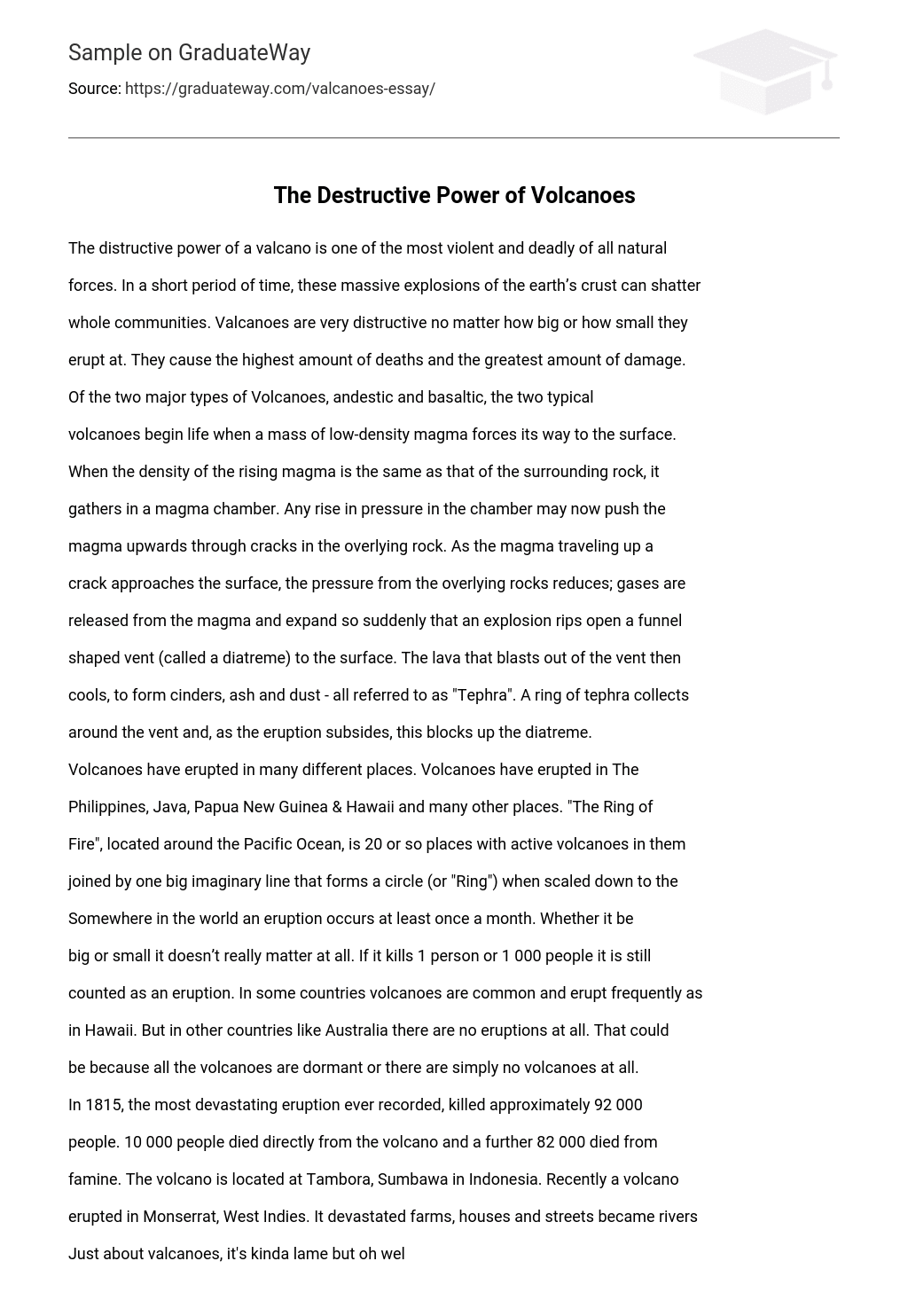The is one of the most violent and deadly of all natural forces. In a short period of time, these massive explosions of the earth’s crust can shatter whole communities. Valcanoes are very distructive no matter how big or how small they erupt at. They cause the highest amount of deaths and the greatest amount of damage. Of the two major types of Volcanoes, andestic and basaltic, the two typical volcanoes begin life when a mass of low-density magma forces its way to the surface. When the density of the rising magma is the same as that of the surrounding rock, it gathers in a magma chamber. Any rise in pressure in the chamber may now push the magma upwards through cracks in the overlying rock. As the magma traveling up a crack approaches the surface, the pressure from the overlying rocks reduces; gases are released from the magma and expand so suddenly that an explosion rips open a funnel shaped vent (called a diatreme) to the surface. The lava that blasts out of the vent then cools, to form cinders, ash and dust – all referred to as “Tephra”. A ring of tephra collects around the vent and, as the eruption subsides, this blocks up the diatreme.
Volcanoes have erupted in many different places. Volcanoes have erupted in The Philippines, Java, Papua New Guinea & Hawaii and many other places. “The Ring of Fire”, located around the Pacific Ocean, is 20 or so places with active volcanoes in them joined by one big imaginary line that forms a circle (or “Ring”) when scaled down to the Somewhere in the world an eruption occurs at least once a month. Whether it be big or small it doesn’t really matter at all. If it kills 1 person or 1 000 people it is still counted as an eruption. In some countries volcanoes are common and erupt frequently as in Hawaii. But in other countries like Australia there are no eruptions at all. That could be because all the volcanoes are dormant or there are simply no volcanoes at all. In 1815, the most devastating eruption ever recorded, killed approximately 92 000 people. 10 000 people died directly from the volcano and a further 82 000 died from famine. The volcano is located at Tambora, Sumbawa in Indonesia. Recently a volcano erupted in Monserrat, West Indies. It devastated farms, houses and streets became rivers Just about valcanoes, it’s kinda lame but oh wel





